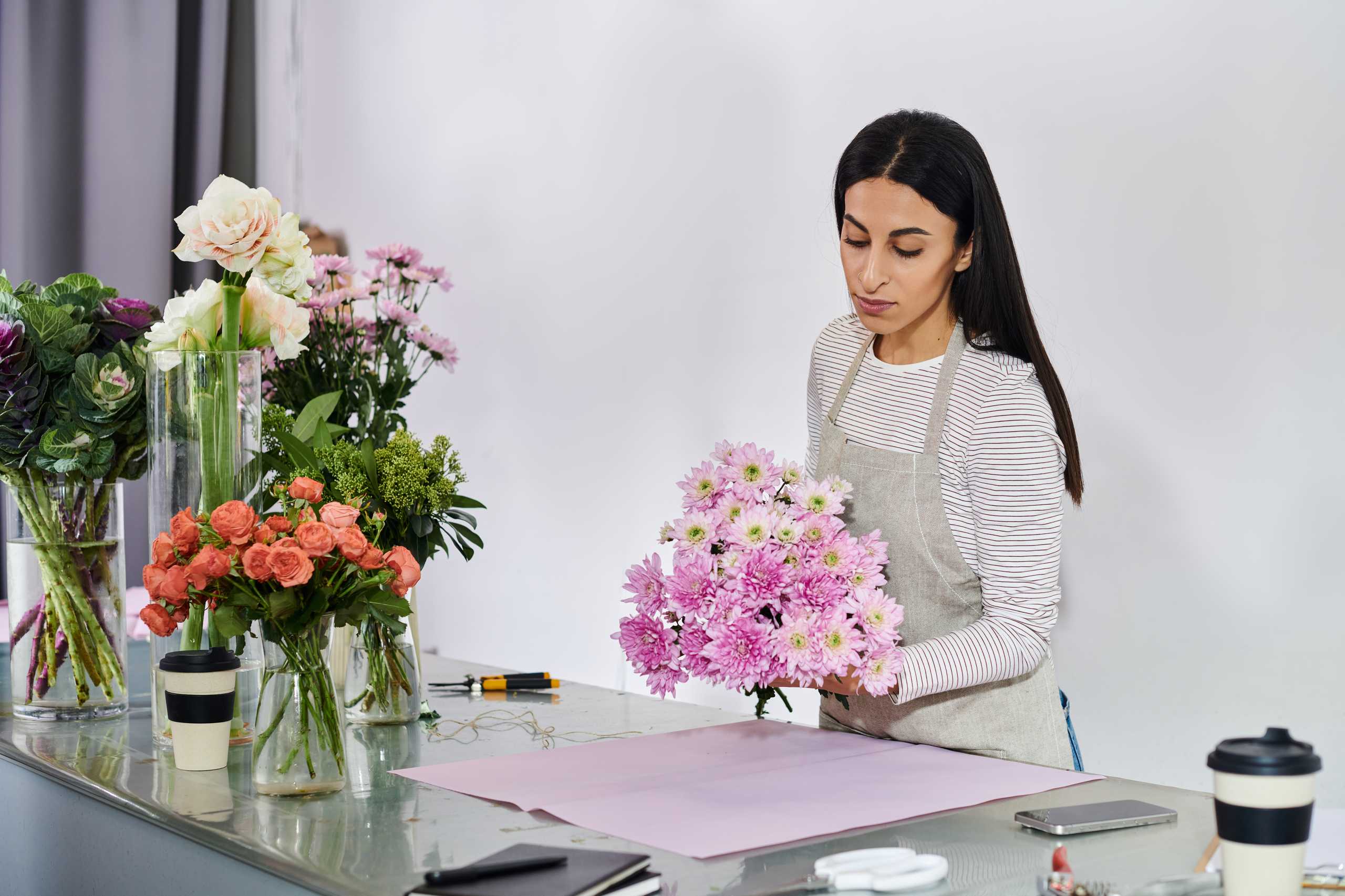In a world of year-round imports and fast-paced trends, there’s something profoundly grounding about designing with the seasons. Seasonal floristry is more than a stylistic choice — it’s a philosophy. A way of slowing down, aligning with nature’s cycles, and creating beauty that feels authentic, timely, and alive.
Why Seasonal Matters
When you use flowers that are naturally blooming in the current season, your work carries a special energy. It feels fresh, intentional, and connected to the world outside.
There’s a visible difference between tulips forced in January and those that burst open in spring. Between autumnal dahlias in season and ones flown across continents out of sync. Seasonal blooms are not only more sustainable — they’re more expressive.
They reflect the mood of the moment:
- Spring: soft, joyful, full of promise
- Summer: lush, vibrant, wild
- Autumn: rich, textured, earthy
- Winter: minimal, quiet, poetic
By tuning into these moods, your designs resonate more deeply.
Spring Awakening
Think of the first blush of blossoms after a long winter — hyacinths, ranunculus, cherry branches. Spring floristry is all about delicacy and hope. Use light colors, airy shapes, and playful movement.
It’s a time for:
- Gentle palettes (blush, mint, lemon)
- Small, detailed compositions
- Symbolism of rebirth and beginnings
Summer Abundance
This is nature’s peak — everything is growing, stretching, blooming. Summer invites boldness. Go big with sunflowers, zinnias, garden roses, cosmos. Let arrangements spill, trail, and dance.
Embrace:
- Saturated hues (coral, fuchsia, tangerine)
- Larger bouquets with asymmetrical forms
- Natural wildness and spontaneity
Autumn Warmth
Autumn floristry leans into texture and depth. It’s a season of gratitude, reflection, and preparation. Dahlias, chrysanthemums, berries, grasses — these become your main characters.
Use:
- Warm tones (rust, burgundy, gold)
- Textural layering
- Harvest-inspired elements (fruit, seedpods, leaves)
Winter Stillness
Even in nature’s quietest time, beauty remains. Winter offers bare branches, evergreens, amaryllis, paperwhites. It’s minimal, but not empty — elegant, thoughtful, calm.
Focus on:
- Neutrals with deep contrasts (white, pine green, charcoal)
- Simple lines and shape-driven compositions
- Emphasis on light, form, and negative space
Designing in Harmony
Seasonal floristry is not a restriction — it’s a creative invitation. When you follow the rhythm of nature, you find fresh inspiration every few weeks. Your work becomes more responsive, more surprising, and more deeply felt.
It also encourages sustainability — reducing waste, supporting local growers, and embracing natural imperfections.
At Floral Design Academy, we teach seasonal awareness as part of every course. Because floral design, like life, is most beautiful when it flows with the seasons.
Let the calendar guide your hands.
Let the earth decide the palette.
Let nature speak — and you, design.

